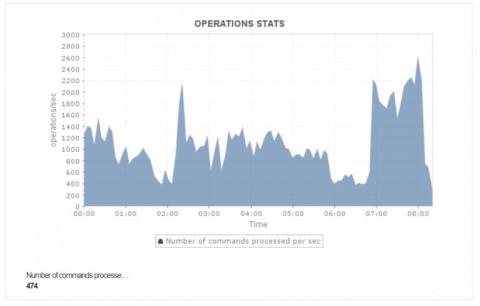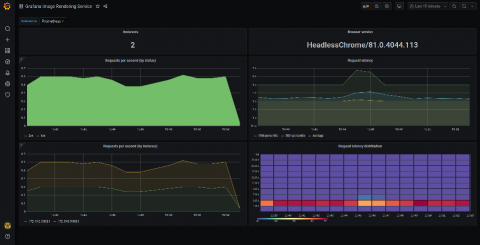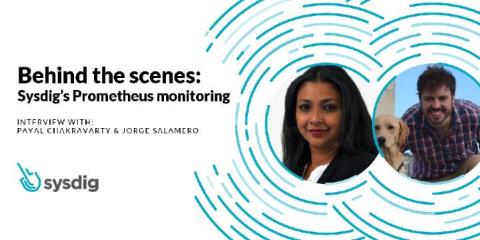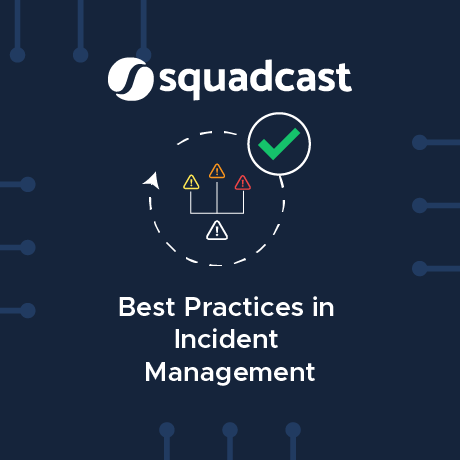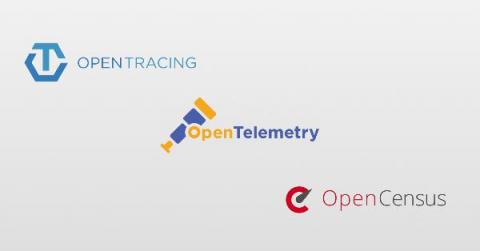Operations | Monitoring | ITSM | DevOps | Cloud
Latest Posts
Redis monitoring 101: Metrics to watch
Redis, which stands for Remote Dictionary Server, is an open source, in-memory data structure store that’s used as a database, memory cache, and message broker. It stores data entirely in memory in the form of key-value pairs. This gives it an edge over all other databases, as it eliminates the need to access data from the disk. It also makes Redis one of the fastest NoSQL databases, where data is accessed in microseconds because there are no seek time delays.
Grafana 7.0 preview: New image renderer plugin to replace PhantomJS
Many Grafana users export images of their dashboard panels. This feature powers the ability to receive alerts with a rendered image of the panel attached, which is valuable for quickly spotting if something is about to go sideways in production. Since Grafana v2.0, when support for server-side rendering of dashboard panels as images was introduced, PhantomJS has served as the built-in image renderer that enables this feature.
How to deploy an app to AWS: App security
AWS security is an ongoing battle that you must address during every release, every change, and every CVE. When you’re first launching your production application, it’s impossible to check all the boxes; you simply don’t have the time. Until your application gets more adoption, you only have the time to do the bare essentials of security.
Sysdig's Prometheus monitoring behind the scenes
A few weeks ago, we announced that Sysdig is offering fully compatible Prometheus monitoring at scale for our customers, as well as a new website called PromCat.io hosting a curated repository of Prometheus exporters, dashboards and alerts. This got me thinking about how we were actually able to implement the changes necessary to offer this in our platform.
Best Practices in Incident Management
The Road to OpenTelemetry: How We Got Here
Monitoring began by using software agents to capture data from infrastructure, operating systems, and applications. These agents would collect metrics and events from these systems to understand the health of the underlying system and the applications. This is what infrastructure monitoring is today.
Ruby Garbage Collection: More Exciting than it Sounds
Running software uses computer memory for data structures and executable operations. How this memory is accessed and managed depends on the operating system and the programming language. Many modern programming languages manage memory for you, and Ruby is no different. Ruby manages memory usage using a garbage collector (also called gc). In this post, we’ll examine what you, a Ruby developer, need to know about Ruby’s gc. Use the links below to skip ahead in the tutorial.
Making employees feel appreciated with the UMatter bot
In the middle of January 2020, I got a notification about the upcoming Mattermost hackathon that was being hosted on the HackerEarth platform. I checked out the hackathon page but I forgot about it the next day when I went to work. One morning, I was surfing the internet sipping my coffee and landed on a website that discussed why employee churn rate is high in organizations.
Calico Enterprise 3.0 - Global Network Security Center for Kubernetes
As our enterprise customers build out large, multi-cluster Kubernetes environments, they are encountering an entirely new set of security challenges, requiring solutions that operate at scale and can be deployed both on-premises and across multiple clouds.



